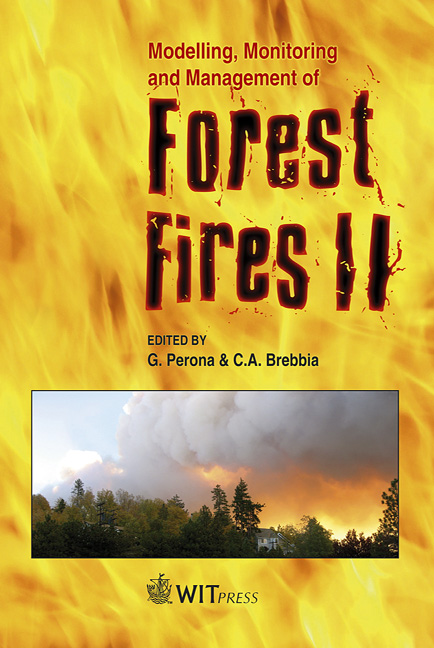An Integrated Approach For Early Forest Fire Detection And Verification Using Optical Smoke, Gas And Microwave Sensors
Price
Free (open access)
Transaction
Volume
137
Pages
10
Page Range
97 - 106
Published
2010
Size
1,338 kb
Paper DOI
10.2495/FIVA100091
Copyright
WIT Press
Author(s)
N. von Wahl, S. Heinen, H. Essen, W. Kruell, R. Tobera & I. Willms
Abstract
In 2008 the research project \“International Forest Fire Fighting” (iWBB) was funded by the Minister for Economic Affairs and Energy of the State of North Rhine-Westphalia, Germany. A group of companies, research institutes and universities are working together to develop an integrated, but modular system. An integrated approach for early forest fire detection and suppression is based on an adequate combination of different detection systems depending on wildfire risk, the size of the area and human presence affiliated with an adequate logistical infrastructure, training by simulation, and innovative extinguishing technology based on armoured tracked fire fighting vehicles. As large areas have to be monitored, only remote sensing technologies (e.g. video based systems) are able to perform early detection adequately. To reduce false alarms a remote controlled unmanned aerial vehicle (UAV) equipped with gas sensors and a thermal camera flies to a potential fire to specify the origin of the reported cloud. The UAV can also be used as a scout for fire fighters. After successful fire extinction an unmanned blimp can be used as a fireguard to reduce the risk of reignition of the fire. As monitoring tools, a microwave radiometer, which is capable of detecting hot spots even under insufficient vision (due to smoke clouds and below the ground surface), gas and smoke sensors and a thermal camera are mounted on the blimp. The benefit of a blimp is a higher payload.
Keywords
fire detection, gas sensors, microwave radiometer, smoke detector, UAV, remote sensing, fire scout, fireguard





